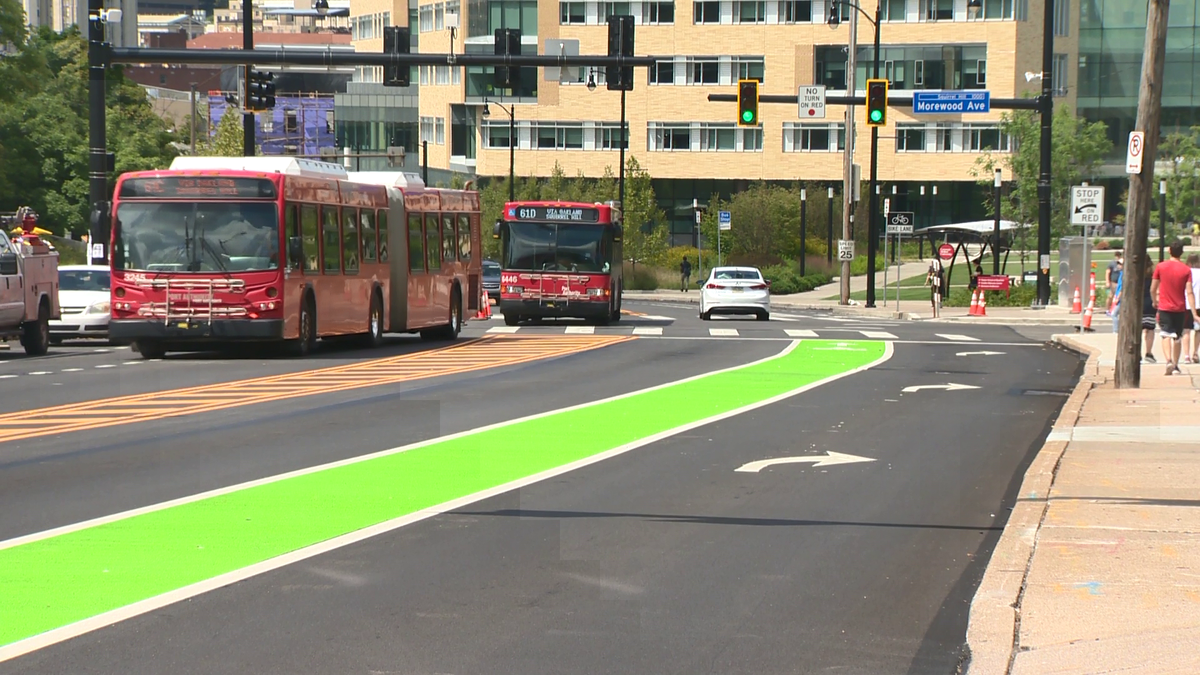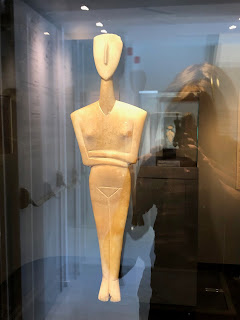I've done all sorts of things on a bicycle that, until I did them, I wouldn't have thought possible.
And I've done most of the things most people do but would never admit to doing. Among them are at least one most people will admit to having done during puberty or even in their teen years, but not as an adult.
I think you know where this is going.
The things I've done that most people won't admit to having done aren't all things I've done on a bicycle. In fact, it never even occurred to me to try one of those things while astride two wheels.
Hint: It's something that shocks people when they catch someone doing it precisely because they know they themselves have done it but would never own up to it.
It was a cause of consternation for me when, as a teenager, I was supposed to watch for shoplifters in the Alexander's department store where I was working.
When I heard some suspicious rustling in the next aisle over--women's wear--I was ready to spring into action. The man in the aisle indeed had a pair of silky panties in his hand. But he wasn't stuffing them into a bag or his pocket: Filling the latter would have been difficult, as his pants were pulled down. So were his underpants.
As extensive as Alexander's employee training was, it didn't teach us how to deal with a man masturbating in the lingerie aisle. Being the teenager I was, I was tempted to say something snarky (or that my young mind would have thought clever). Instead, I called a security guard who dragged the guy away and called the cops.
I'm guessing that the guy was charged with public lewdness, or some such thing--even though the "public", as far as I know, consisted only of that security guard and myself.
I hadn't thought about the incident in a long time. A news story that came my way brought it back to mind, and with it, a question I never thought I'd ask: What would I do if I saw someone masturbating on a bicycle? Oh, and what if I were a cop and caught someone in the act?
I'm sure there must be something in police academy training that covers, if not such a specific incidence, then at least what to do if a person is pleasuring him or her self in public.
That is the situation an off-duty police officer in Macomb County, Michigan (near Detroit) faced recently. She was jogging on an asphalt trail in a county park when she "observed a very tall man in gray pants riding a mountain bike and fondling his genitals in full view of the public." According to that same report, about half an hour later, another woman saw the same man "on his bike with his penis exposed."
The man, William Benjamin Brown, was charged with two counts of "aggravated indecent exposure," which could bring him a two-year prison sentence.
Here's what I'd like to know: Did he ride hands-free? Or did he use one hand to keep a straight line and the other to wiggle?
And I've done most of the things most people do but would never admit to doing. Among them are at least one most people will admit to having done during puberty or even in their teen years, but not as an adult.
I think you know where this is going.
The things I've done that most people won't admit to having done aren't all things I've done on a bicycle. In fact, it never even occurred to me to try one of those things while astride two wheels.
Hint: It's something that shocks people when they catch someone doing it precisely because they know they themselves have done it but would never own up to it.
It was a cause of consternation for me when, as a teenager, I was supposed to watch for shoplifters in the Alexander's department store where I was working.
When I heard some suspicious rustling in the next aisle over--women's wear--I was ready to spring into action. The man in the aisle indeed had a pair of silky panties in his hand. But he wasn't stuffing them into a bag or his pocket: Filling the latter would have been difficult, as his pants were pulled down. So were his underpants.
As extensive as Alexander's employee training was, it didn't teach us how to deal with a man masturbating in the lingerie aisle. Being the teenager I was, I was tempted to say something snarky (or that my young mind would have thought clever). Instead, I called a security guard who dragged the guy away and called the cops.
I'm guessing that the guy was charged with public lewdness, or some such thing--even though the "public", as far as I know, consisted only of that security guard and myself.
I hadn't thought about the incident in a long time. A news story that came my way brought it back to mind, and with it, a question I never thought I'd ask: What would I do if I saw someone masturbating on a bicycle? Oh, and what if I were a cop and caught someone in the act?
I'm sure there must be something in police academy training that covers, if not such a specific incidence, then at least what to do if a person is pleasuring him or her self in public.
That is the situation an off-duty police officer in Macomb County, Michigan (near Detroit) faced recently. She was jogging on an asphalt trail in a county park when she "observed a very tall man in gray pants riding a mountain bike and fondling his genitals in full view of the public." According to that same report, about half an hour later, another woman saw the same man "on his bike with his penis exposed."
 |
| Did he ride hands-free? |
The man, William Benjamin Brown, was charged with two counts of "aggravated indecent exposure," which could bring him a two-year prison sentence.
Here's what I'd like to know: Did he ride hands-free? Or did he use one hand to keep a straight line and the other to wiggle?


































